Estimated reading time: 11 minutes
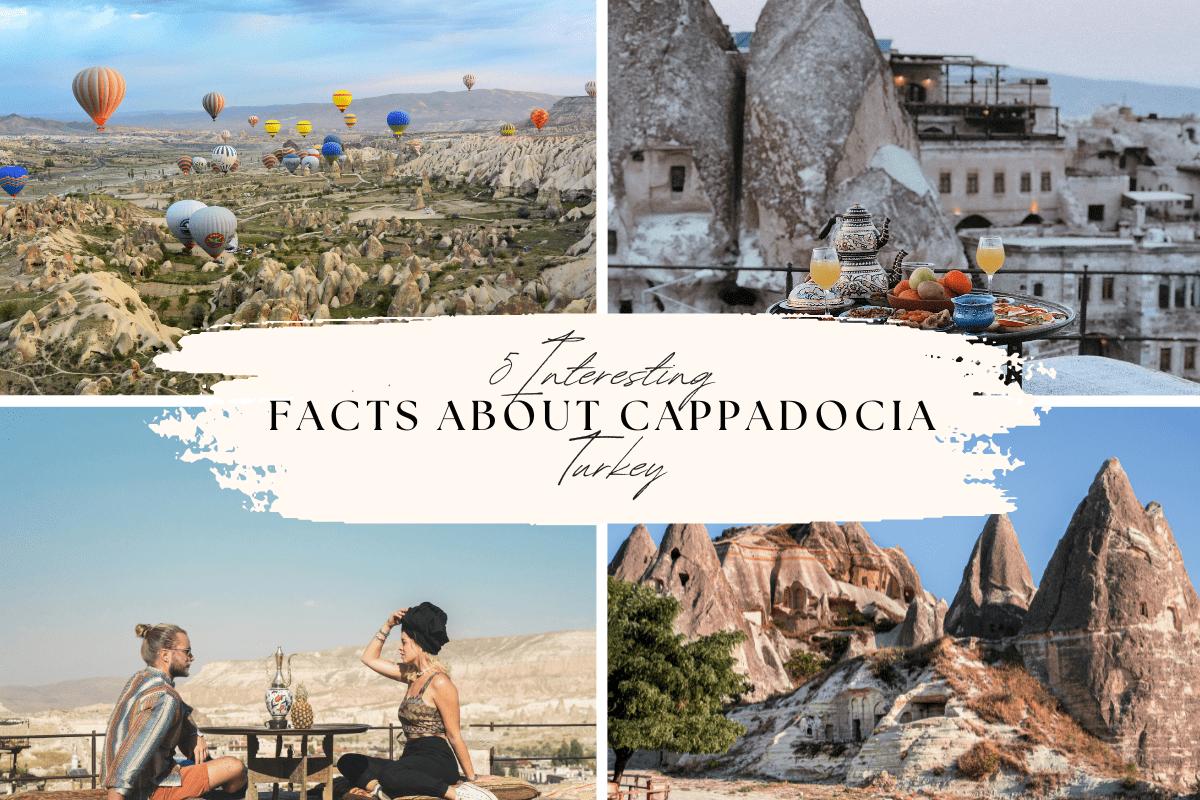
General Information About Cappadocia Turkey
Before reading Facts About Cappadocia Turkey, lets have a quick view about the fantastical lands of Cappadocia.
Cappadocia, Turkey, is a breathtaking landscape of whimsical fairy chimneys and ancient rock formations that paint a picture straight out of a fantasy novel. This region, steeped in history and mystique, is not just about its striking geological oddities; it’s also rich in cultural heritage, with cave dwellings, rock-cut churches adorned with ancient frescoes, and underground cities that date back to the early Christians.
Recommended:
Where is Cappadocia located?
Cappadocia is located in central Turkey, primarily within the boundaries of the Nevşehir Province. The region extends over several other provinces, including Kayseri, Kırşehir, Aksaray, and Niğde, creating a broad area rich in unique geological and historical features. Cappadocia is situated on a high plateau over 1,000 meters in elevation, which contributes to its continental climate of hot, dry summers and cold, snowy winters.
History of Cappadocia
Historically, the strategic location of Cappadocia, situated between competing empires, made it an important crossroads for trade and cultural exchange. The ancient trade routes that passed through the region, including parts of the historical Silk Road, facilitated the blending of different cultures and religions, which is evident in the diverse architectural and artistic heritage visible today. Such facts about Cappadocia Turkey will enhance your visit, so let’s dive into this magical land together.
1. How old is Cappadocia Turkey?
Cappadocia’s landscape was formed over millions of years.
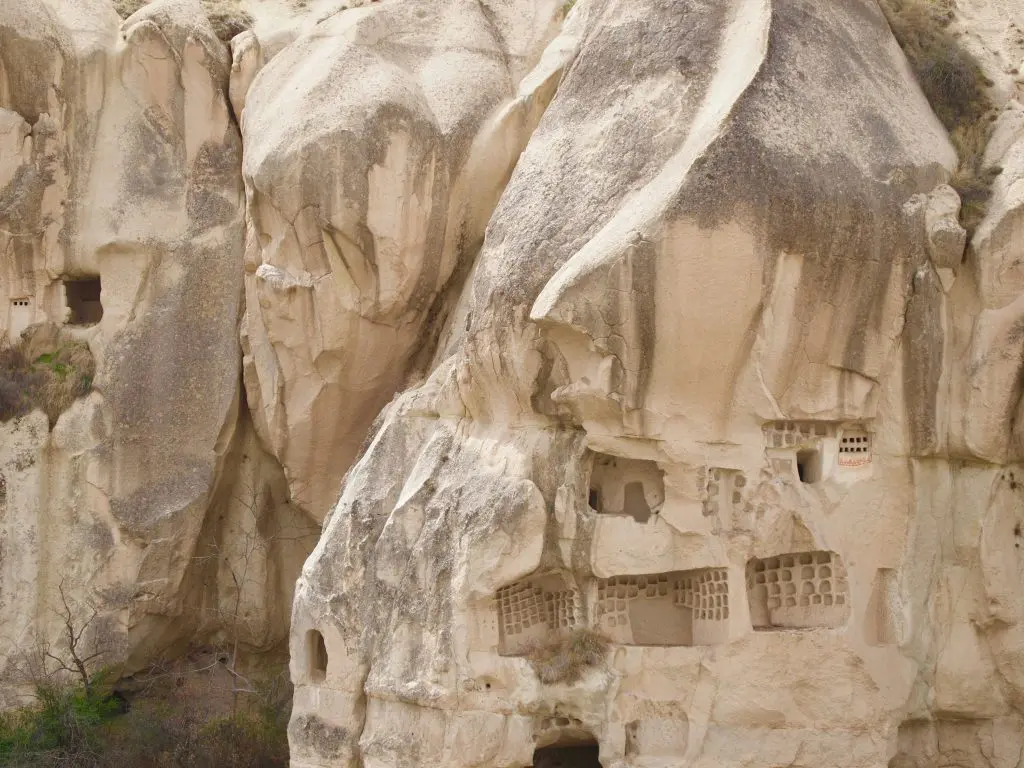
One of the most important Facts About the Cappdocia is the fairy chimneys and rock formations. They were formed through volcanic eruptions and erosion processes that began around 60 million years ago. The soft volcanic rock (tuff) left by the eruptions was easily carved by residents throughout history, leading to the creation of the incredible cave homes, churches, and cities that visitors can explore today.
As a region known for human habitation, Cappadocia has a rich history that dates back to at least the late Bronze Age, around 1600 BCE. It was an important hub in the Hittite Empire which thrived in this period.
While the geological landscape of Cappadocia is ancient, its cultural and historical development has been shaped over thousands of years by various civilizations.
2. Why is Cappadocia unique?
Fairy Chimneys in Cappadocia Turkey
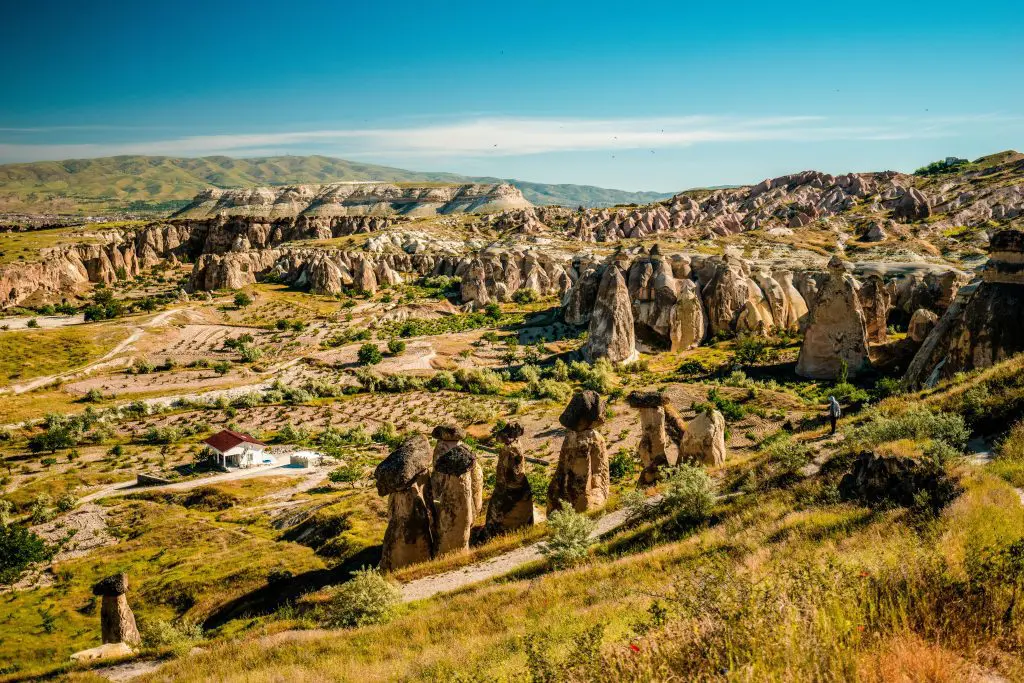
Cappadocia is unique for its extraordinary landscape of fairy chimneys and vast rock formations, which create a surreal, almost otherworldly scene. This geological marvel is complemented by a rich history where humans have ingeniously used the soft volcanic rock to carve out homes, churches, and entire underground cities.
The combination of its dramatic natural beauty and extensive human history, visible through cave dwellings and frescoed chapels, sets Cappadocia apart as a stunning testament to both nature’s artistry and human ingenuity.
Adding to its uniqueness are the iconic hot air balloon rides that offer panoramic views of this enchanting landscape at sunrise, making it a visually iconic and culturally rich destination.
3. What is the story of Cappadocia Turkey?
Cappadocia is famous for its horses and ancient settelements.

Cappadocia is often called the “land of beautiful horses” due to the historical significance of horses in the region, derived from the ancient Persian name “Katpatuka,” which is said to mean “the land of beautiful horses.” This name reflects the region’s historical role as a prime horse breeding area during the times of the Persian Empire and beyond.
The region’s vast, open landscapes and valleys provided ideal conditions for breeding and training horses. These horses played a crucial role in the military and economic vitality of the empires that controlled the area, including the Hittites, Persians, and later, the Romans. The significance of horses continues into the present in Cappadocia, where horseback riding remains a popular way for tourists to explore the scenic trails and historic sites.
The facts about Cappadocia Turkey are not just one of natural beauty but also of cultural resilience and creativity, as demonstrated by its extensive subterranean architecture and the enduring legacy of its frescoes and historical artifacts. This blend of natural wonder and human heritage makes Cappadocia a fascinating chronicle of both Earth’s and humanity’s evolving narrative.
4. Who built the caves in Cappadocia?
The caves in Cappadocia were built by early Christians.
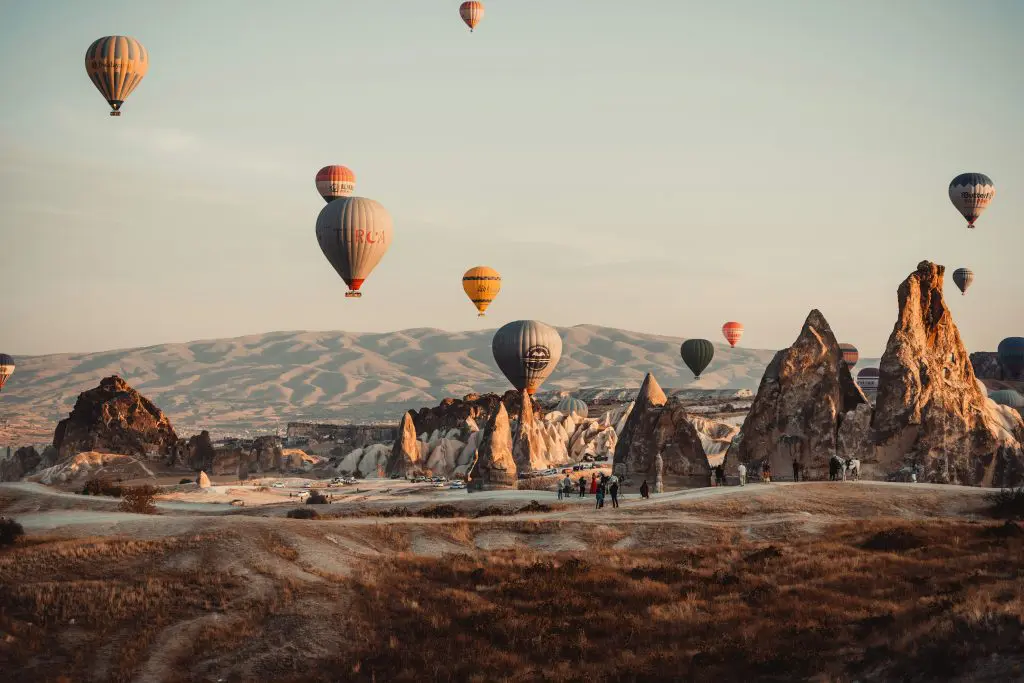
The caves in Cappadocia are some of the most interesting facts about Cappadocia Turkey. They were primarily carved out by the early inhabitants of the region, starting from as early as the 4th century AD. These inhabitants were early Christians who sought refuge from Roman persecution. They utilized the soft, easily carvable rock formed from volcanic ash, known as tuff, to create these extensive underground dwellings, churches, and cities.
Over time, these structures were expanded and deepened, with some underground cities like Derinkuyu and Kaymaklı being capable of housing thousands of people and extending several levels deep into the ground. These cities included amenities such as ventilation shafts, wells, and connecting passageways, which were used for defensive purposes against invaders throughout history.
5. Is Cappadocia a wonder of the world?
Cappadocia is not officially listed as one of the “New Seven Wonders of the World”.
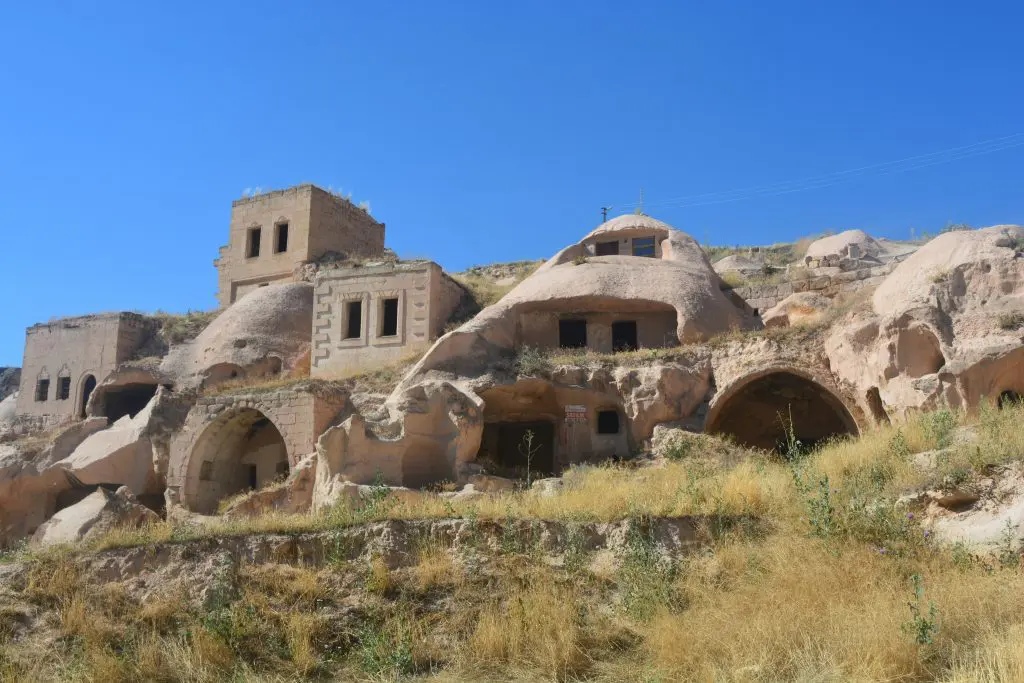
Cappadocia is frequently considered a wonder due to its unique and spectacular landscapes, historical significance, and cultural heritage. The elements of the facts about Cappadocia Turkey, from its fairy chimneys and rock-hewn churches to its extensive underground cities create a mystical and almost otherworldly experience that many liken to a natural wonder.
6. Where to see the best views in Cappadocia?
For the best views in Cappadocia, head to Pigeon Valley or the Red Valley.

Sunset Point in Ortahisar: Located in the town of Ortahisar, Sunset Point offers spectacular views of the surrounding valleys and fairy chimneys, especially during sunset. It’s a great spot to relax and take in the natural beauty of Cappadocia.
Love Valley: This valley, named for its phallic-shaped rock formations, offers fantastic views of the unique landscape. Visitors can hike or ride horses through the valley and enjoy the scenery.
Red Valley: Known for its vibrant red rock formations, Red Valley is another excellent spot for hiking and enjoying panoramic views of Cappadocia’s unique landscape.
Devrent Valley (Imagination Valley): This valley is famous for its rock formations that resemble various animals and objects. Visitors can hike through the valley and enjoy the imaginative scenery.
Pigeon Valley: Named for the numerous pigeon houses carved into the rock formations, Pigeon Valley offers scenic hiking trails with stunning views of the surrounding valleys and fairy chimneys.
7. What are the underground cities in Cappadocia?
Cappadocia is home to several fascinating underground cities.
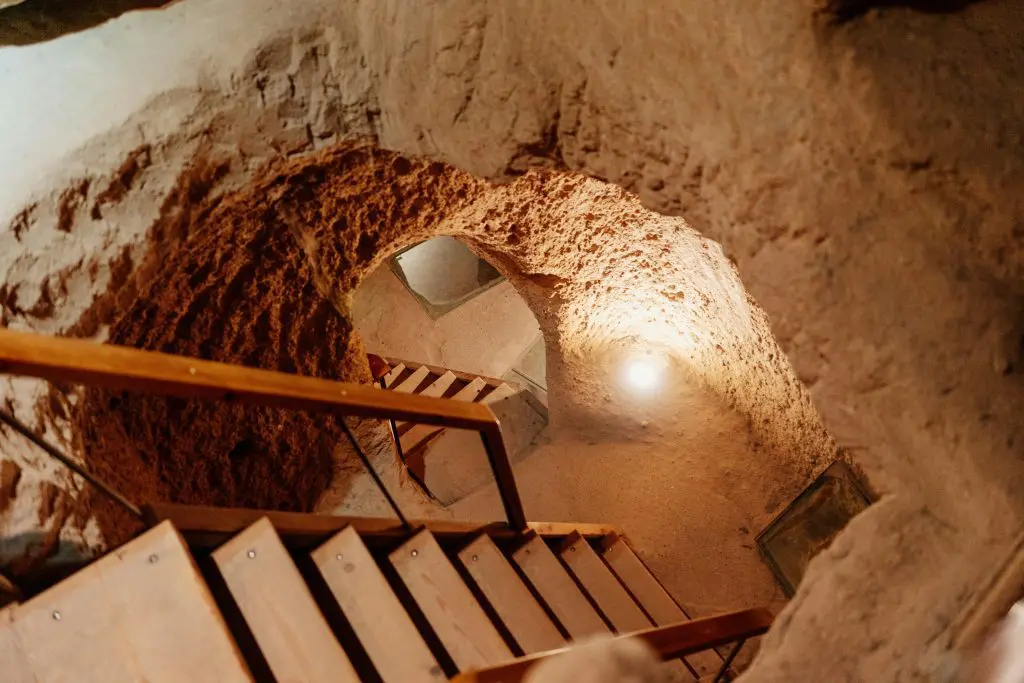
Derinkuyu Underground City
Derinkuyu is the largest and deepest underground city in Cappadocia, extending approximately 60 meters (200 feet) underground. It is believed to have been built by the Phrygians in the 8th–7th centuries BCE and later expanded by early Christians to escape persecution. Derinkuyu features multi-levels with living quarters, kitchens, churches, ventilation shafts, and even a school.
Kaymaklı Underground City
Kaymaklı is another significant underground city in Cappadocia, although it is not as extensive as Derinkuyu. It consists of eight levels, of which only four are open to visitors. Kaymaklı was likely used as a refuge by early Christians and also features living quarters, kitchens, churches, and storage rooms.
Özkonak Underground City
Özkonak is a lesser-known underground city in Cappadocia, but it offers a unique glimpse into the region’s history. It is smaller than Derinkuyu and Kaymaklı but still features multiple levels with living spaces, ventilation shafts, and other facilities.
8. What are the local foods and drinks to try in Cappadocia?
Cappadocia is famous for its selection wines and the Turkish specialty testi kebab.

Cappadocian Wine
Wine is the sweetest of the facts about Cappadocia Turkey! Cappadocia has a thriving wine culture, with vineyards scattered throughout the region. The unique terroir, characterized by volcanic soil and a continental climate, produces excellent grapes for wine production. Some popular Cappadocian wines include varieties made from indigenous grapes such as Öküzgözü and Bogazkere, as well as international varieties like Cabernet Sauvignon and Merlot.
Testi Kebab (Pottery Kebab)
Testi kebab is a traditional Turkish dish popular in Cappadocia. It typically consists of meat (often lamb or chicken) and vegetables cooked in a clay pot, which is sealed with dough and then baked in a wood-fired oven. The dish is served by breaking open the clay pot at the table, creating a dramatic presentation.
Also try Testi Soup while in Cappadocia: Similar to testi kebab, testi soup is cooked in a clay pot sealed with dough. The soup typically contains a hearty combination of meat, vegetables, legumes, and spices, resulting in a rich and flavorful broth.
FAQs and Facts about Cappadocia Turkey
Cappadocia is indeed mentioned in the Bible, specifically in the New Testament. It is listed in the Book of Acts during the account of Pentecost, where people from various regions, including Cappadocia, were present in Jerusalem and heard the Apostles speak in their own languages.
The best months to visit Cappadocia are typically April, May, September, and October. These months offer mild weather, making it ideal for exploring the outdoor wonders of Cappadocia, including hiking in the valleys and enjoying hot air balloon rides. The temperatures are comfortable during these spring and autumn months, avoiding the summer heat and the winter cold, which can be quite extreme due to the region’s continental climate.
Yes, there are still Christians in Cappadocia, although they are a small minority. The region has a rich Christian heritage, notably from its role as a haven for early Christians during Roman persecution, and it remained a significant Christian center through the Byzantine era.
Over the centuries, the Christian population in Cappadocia experienced various phases of change, primarily influenced by shifts in political and religious control. During the early Christian era, Cappadocia was a significant religious and monastic center, famous for its rock-cut churches and monasteries.
However, with the rise of the Ottoman Empire and the establishment of Islam as the dominant religion in the region, many Christians either converted to Islam or migrated to areas with larger Christian populations.
You can book via tour operators. Check availability and pricing for your desired dates, and book in advance to secure your spot, especially during peak seasons. Provide necessary information such as your name and contact details when booking, and confirm your reservation with the tour operator.
 Black Friday: 60% Off
Black Friday: 60% Off Croatia Sailing : Save up to 60%
Croatia Sailing : Save up to 60% Ski Bansko : 60% Off
Ski Bansko : 60% Off Central & Eastern Europe Tours: 60% Off
Central & Eastern Europe Tours: 60% Off  Why Travel Talk
Why Travel Talk Travel Talk Blog
Travel Talk Blog Responsible Travel
Responsible Travel Fair Travels with Travel Talk
Fair Travels with Travel Talk